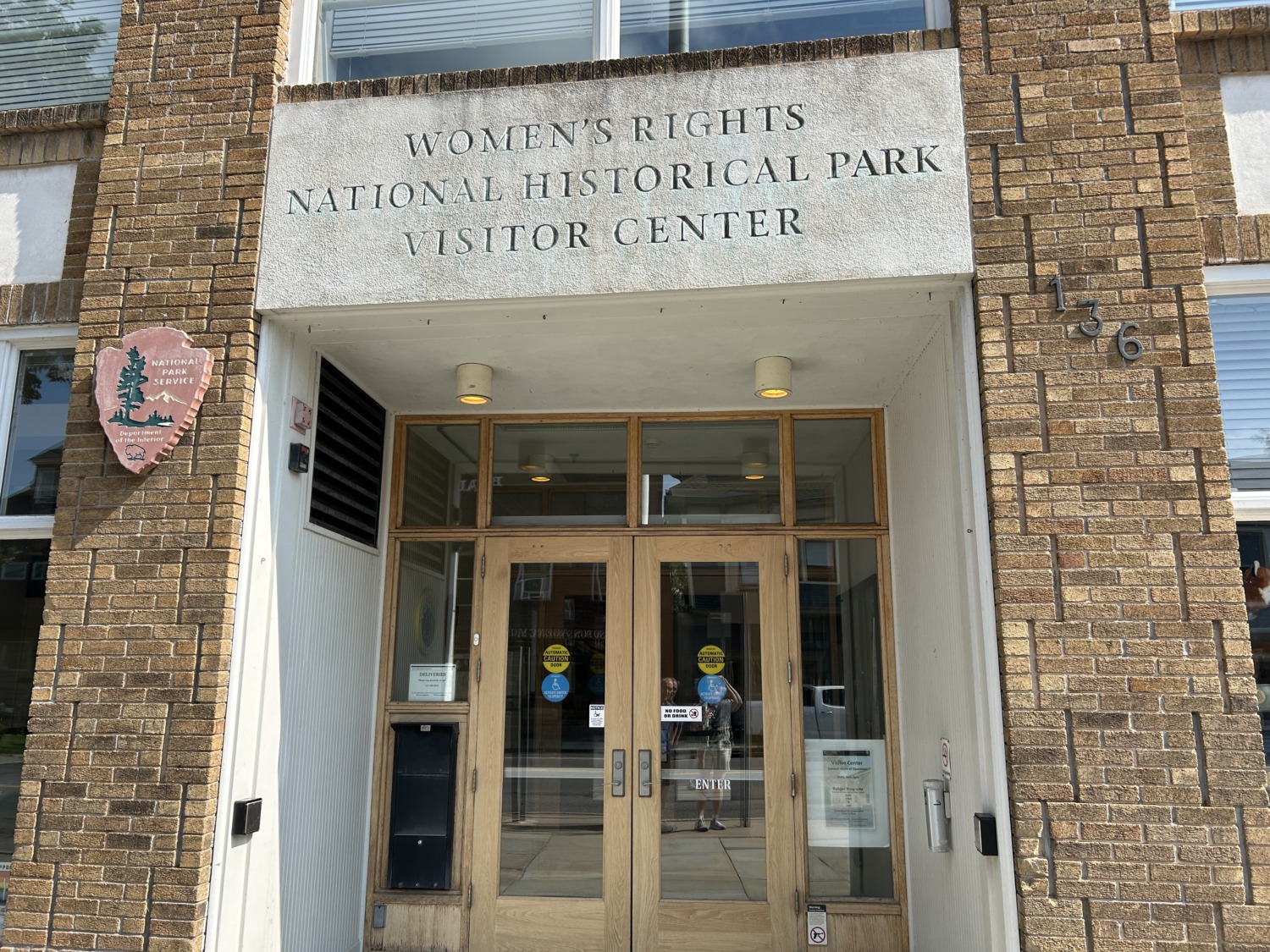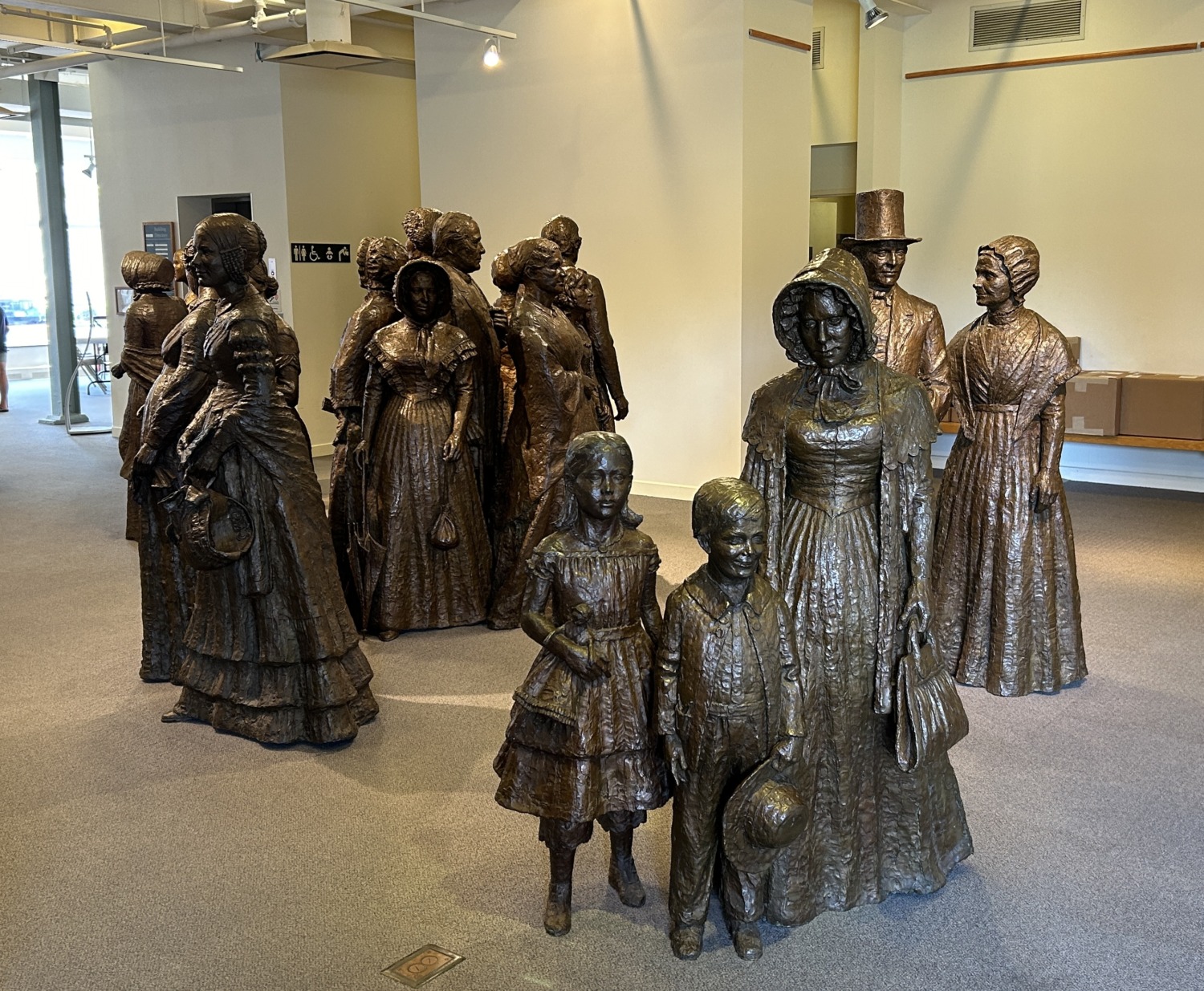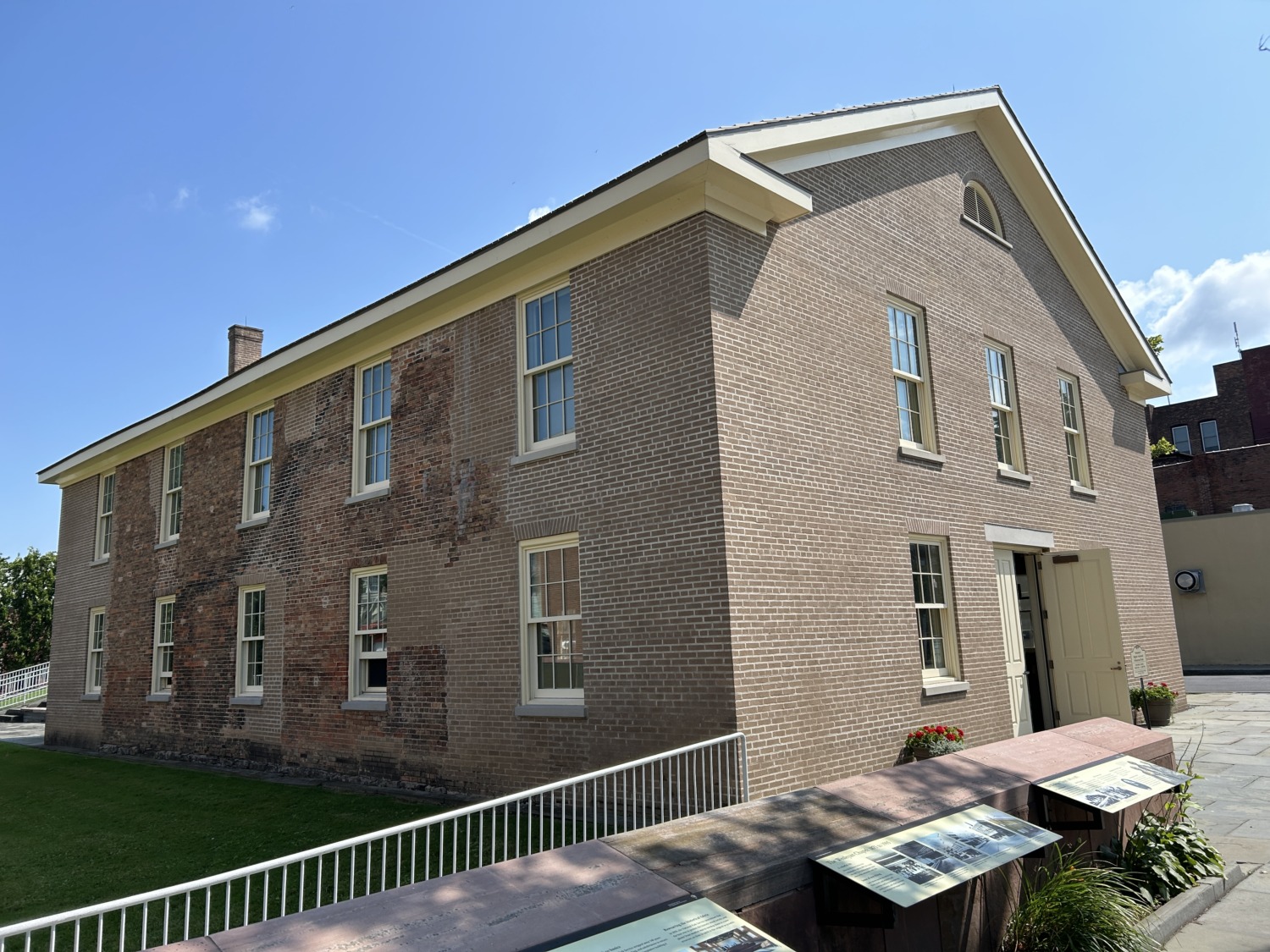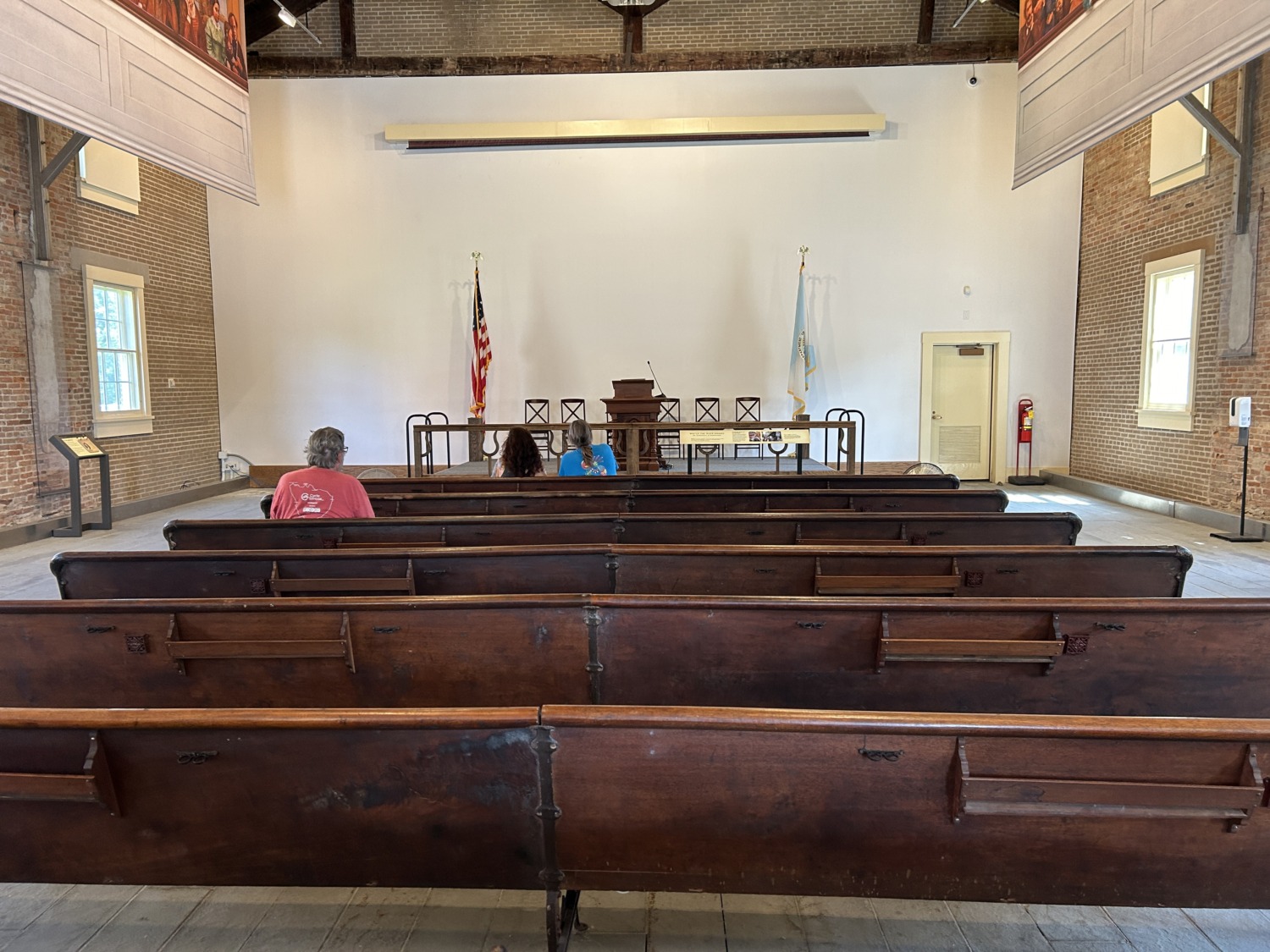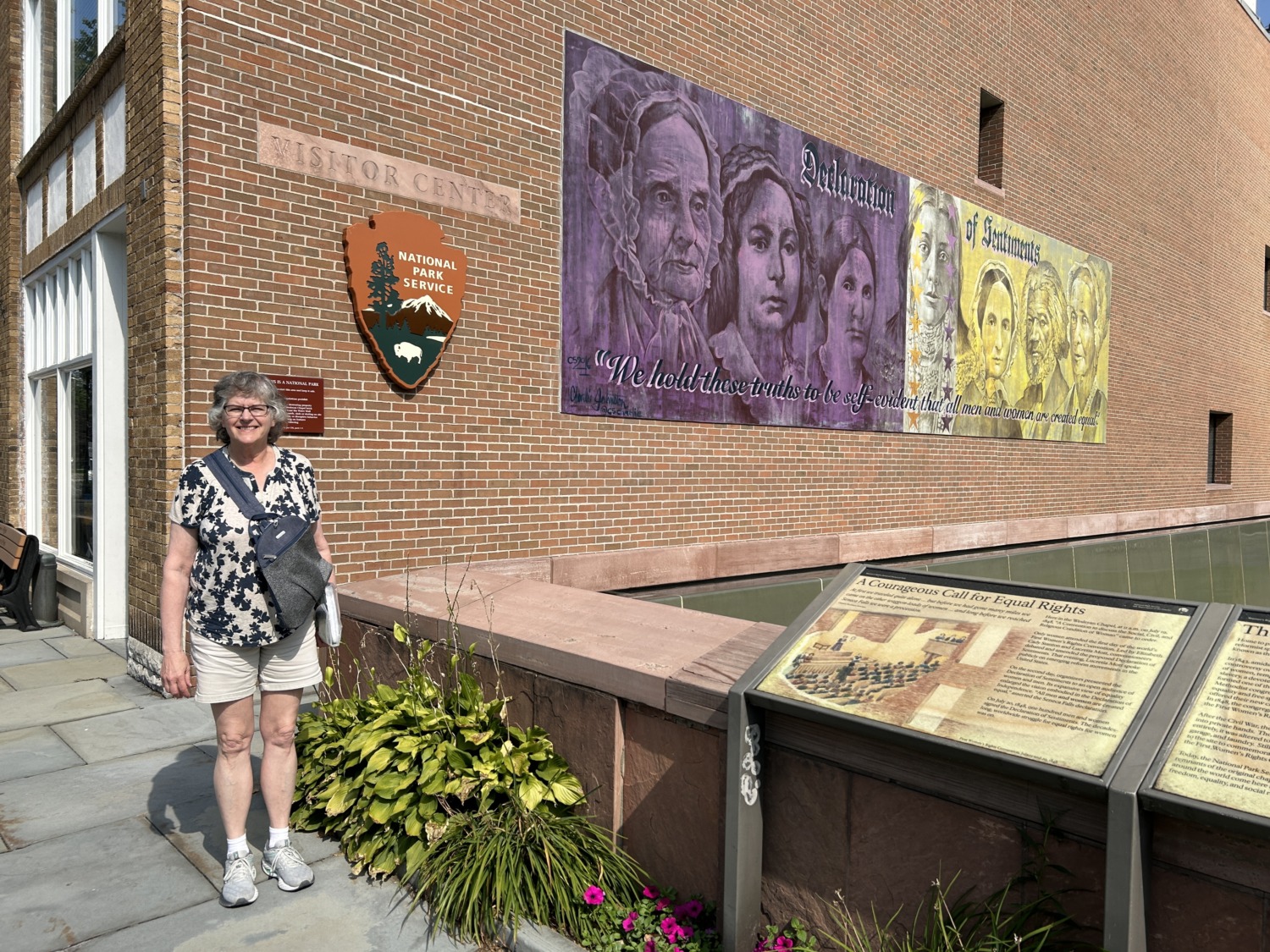Women’s Rights National Historical Park is in the next town over from Auburn, so we headed to Seneca Falls for my next stamp. Even though the two parks are very close together, Harriet Tubman is brand new and Women’s Rights was established in 1980. Because it has been around longer, it has a very nice Visitors Center with regular hours and daily Ranger talks. And, of course, an easy-to-find stamp.
Women’s Rights National Historical Park celebrates the first Women’s Rights Convention, held July 19 and 20, 1848, in Seneca Falls, New York. The convention was held in the progressive Wesleyan Chapel in downtown Seneca Falls and attended by 300 women. A Declaration of Sentiments, based on the Declaration of Independence, had been prepared by Elizabeth Cady Stanton, Lucretia Mott, Mary Ann M’Clintock, and Jane Hunt, who also planned the convention.
There are five buildings connected with the historical park. The Visitors Center has an excellent museum and movie and is the best place to start. In the 1840’s, women could not vote, speak in public, hold office, or attend college. Their only options for earning a living were as a teacher, seamstress, domestic, or mill worker. A married woman could not make contracts, sue in court, divorce her husband, gain custody of her children, or own property. The museum does a very good job of interpreting all this. The museum shows how things have changed, and what it took to make the change. It also shows how things still need to change before women will be completely equal to men.
The Wesleyan Chapel, where the first convention was held in 1848 is another building that is part of the Women’s Rights National Historical Park. The building was used by many different businesses in Seneca Falls until it was acquired by the National Park Service. The NPS restored the building closer to its 1848 appearance.
The other three buildings that are part of the Women’s Rights National Historical Park are the Hunt House, M’Clintock House, and the Stanton House. The M’Clintock House and Hunt House are not open for tours. They are located in Waterloo, the next town west from Seneca Falls. The Stanton house is open for tours in the summer, generally once a day.
Visiting the Women’s Rights National Historical Park was very interesting. I consider myself a feminist, which means “an advocate of women’s rights on the basis of the equality of the sexes.” I entered ministry at a time when women were in the minority as pastors and had to fight some prejudice against women in ministry. Women are still paid less than men and still, frequently, in charge of that second shift home front. It has been depressingly obvious to me that our country continues to be alarmingly misogynistic.
Obviously the work done by these women in Seneca Falls is not finished. Women continue to fight to have the right to say what happens to their bodies. Law makers have always devalued women and continue to do so. Exercising our hard-won right to vote is the only way to ensure that, eventually, women’s rights will be equal to men.

